


All who read these articles must have a love of aeroplanes and flying but I’m sure its right to say very little thought is ever given to that other essential piece of infrastructure for flying, the airport or aerodrome. This article takes a look at the premier British airport Heathrow, previously known as London Airport or as far back as 1930, Harmondsworth Aerodrome when it was owned by Fairey Aviation as a flying base for their aircraft assembled just up the road at Hayes.

Between 1917-1919 there was an airfield close to what is now Heathrow, called Hounslow Heath Aerodrome, at the time it was the only airfield near London with custom facilities. When this aerodrome was closed Croydon became the main London airport. Croydon was the base of Imperial Airways and it remained the principal airport for London until its closure to civil aviation at the outbreak of the Second World War.
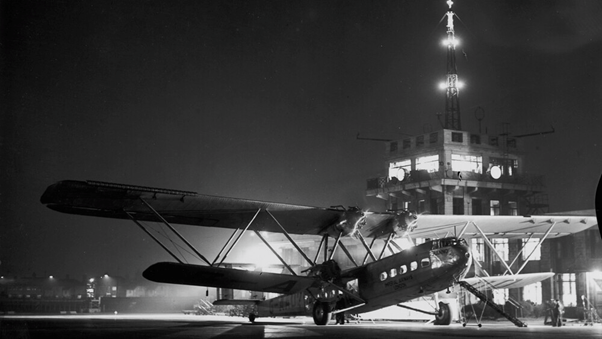
Fairey Aviation surveyed the site near to the closed Hounslow Heath airfield and began buying up land for several years before finally opened their airfield in 1930, after being forced by the Air Ministry to vacate Northolt where they had previously test flown their aircraft. The land they purchased was part of a large area used for market gardening and wheat growing. The soil was said to be some of the most fertile around London as for decades the market gardeners had sold their produce in town and then returned with their carts laden with horse manure which was spread on the fields. The new aerodrome was initially called Harmondsworth Aerodrome after the village on its north side but it was also known as the Great West Aerodrome and Heathrow Aerodrome the first time this name appeared linked to flying. At this time all commercial traffic was still using Croydon. In 1936 Middlesex County Council met to discuss creating an airport by Harmondsworth and the Perry Oaks sewage farm. The proposal was rejected as being too close to the area of land used by Fairey’s aerodrome and the closeness of the sewage farm, also there was an objection by the Ministry of Agriculture regarding the loss of such first rate farmland.
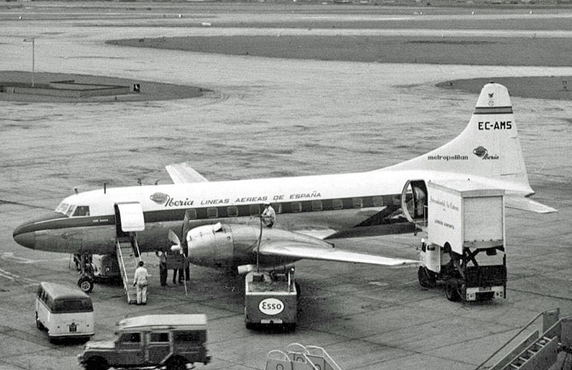
Fairey Aviation however continued to buy up land with the intention of moving their factory at Hayes the few miles south to their aerodrome. With the outbreak of war in 1939 the aerodrome saw some use by the fighter squadrons based at Northolt during diversions or whilst Northolt was under attack. By 1943 the Air Ministry had realised from the rapid growth in aircraft development that a new civil airport would be needed post war as Croydon had no room for expansion. So secret plans were drawn up by the Secretary of State to requisition Fairy’s airfield under wartime rules which would mean, no consultation, no enquiry and more importantly to the Government, minimal compensation to Fairey Aviation.
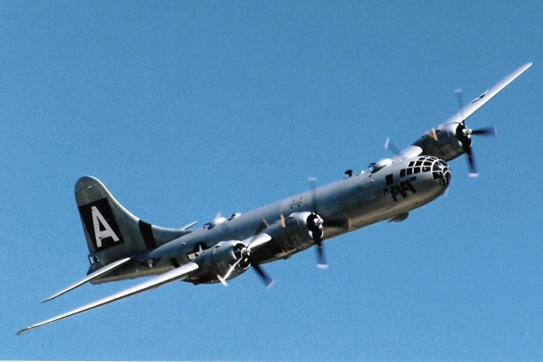
The official line was that the Air Ministry needed the land to build a new long range bomber base capable of operating USAAF B-29 bombers, but this was all a front as the airfield plans were based on recommendations of those for a civil airport. January 1944 saw the plans for a new bomber base revealed and Fairey’s airfield was requisitioned. Fairey’s started legal proceedings for compensation that went on until 1964. During these proceedings the original Fairey hangar on the airfield could not be knocked down so was used for some time as the new airport’s fire station.
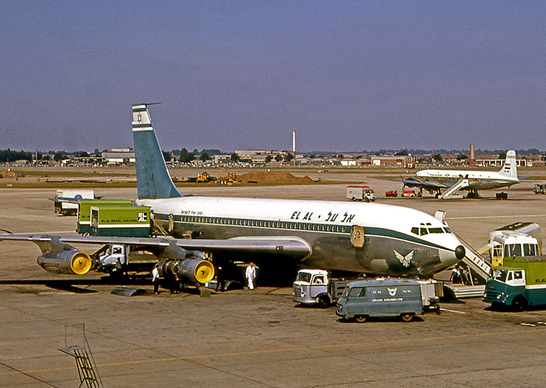
Between January and May 1944, when construction began, there was uproar both from the public and within government about the building of the huge new airfield on such important farmland. Even Churchill complained about the number of men being used on the project. The project ‘leader’ was Lord Balfour, Under Secretary of State for Air who admitted in his memoirs he had deceived Parliament and there had never been any plans other than to build a commercial airport, but acquiring the land under wartime regulations meant there would be no lengthy and costly public enquiry and no compensation for taking over the farmer’s land.
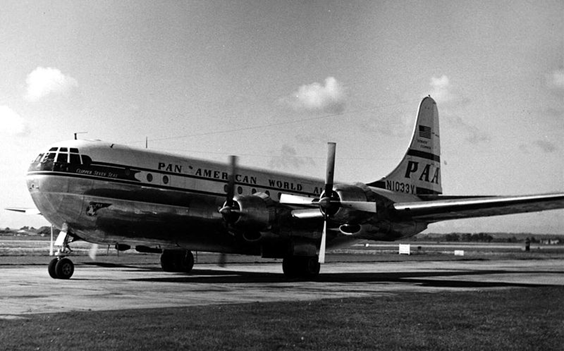
By the end of the war the airfield was still under construction but the runway layout no longer mirrored that of a large bomber base but was more akin to a commercial airport. Some RAF bombers did visit the airfield but no RAF aircraft would ever be based there. Ist January 1946 saw the site transferred from the (military) Air Ministry to the Ministry of Civil Aviation. With some runways laid and passenger facilities being housed in tents, the airport officially opened on 25th March 1946 with the first flight being operated by an Avro Lancastrian of British South American Airways, six days later the airfield was re-named London Airport.
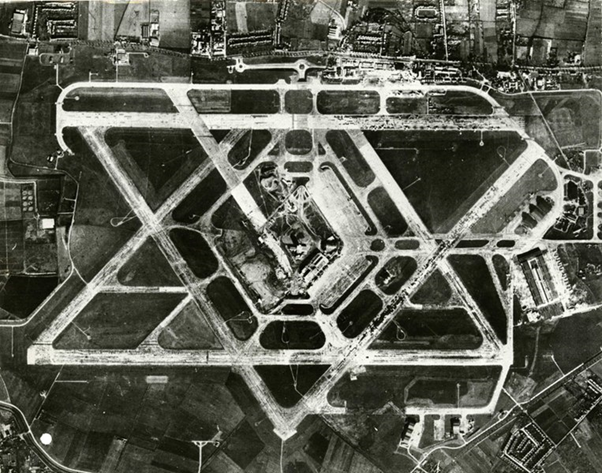
By the 1950’s London Airport had six runways laid out in a star pattern to cover any wind direction also the terminal buildings would now begin to move from their original position alongside the northernmost runway to the area in the middle of the star. A new control tower would also be built there.
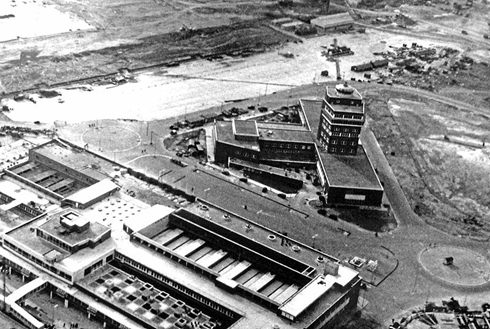
Despite the size of the airport, plans were in place to extend further north taking up parts of Harmondsworth and Harlington (just like todays third runway plan), however in December 1953 these plans were abandoned due to much public protest. By the end of the 1950’s there was the Queen’s Building, the Europa Building (later known as Terminal 2), the Britannic building and the new control tower all occupying the central area of the airport.
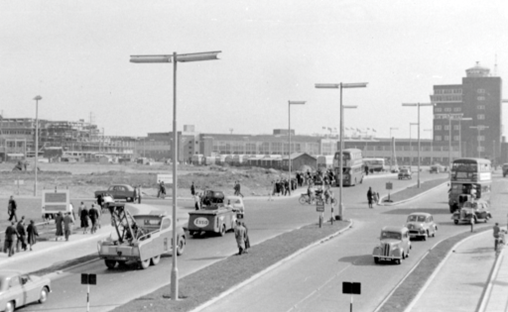
The early 1960’s would see the Oceanic building (later known as Terminal 3) also added to the central terminal area and in 1962 all operations had been moved there from the north side. The legal battle being fought by Fairey Aviation finally came to an end in 1964 with a £1.6M settlement, this enabled the airport operators to finally knock down the old hangar in the middle of the airfield.
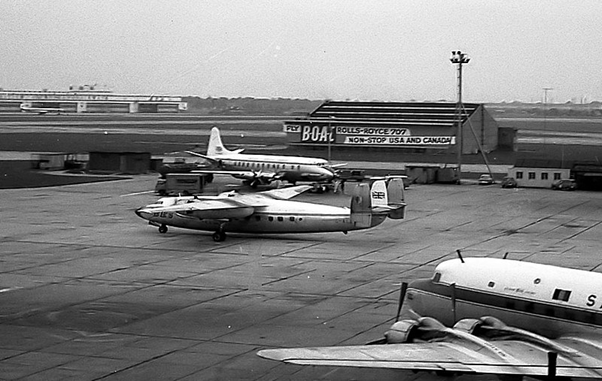
1966 saw the airport renamed Heathrow Airport, this was because Gatwick was becoming more prominent and there needed to be a greater distinction between the two ‘London’ airports. The final terminal to be built as part of the original plans was Terminal 1, which opened in 1968. This layout of passenger facilities in the tight confines of the central area has become a major constraint to expansion of the airport, however when this layout was originally planned it was thought that with flying being the reserve of the wealthy, large car parks would not be needed as the passengers would be driven into the terminal and dropped off by their chauffeur! With freight becoming a large part of airlines business a cargo centre was built alongside the southern runway in the late 1960’s.
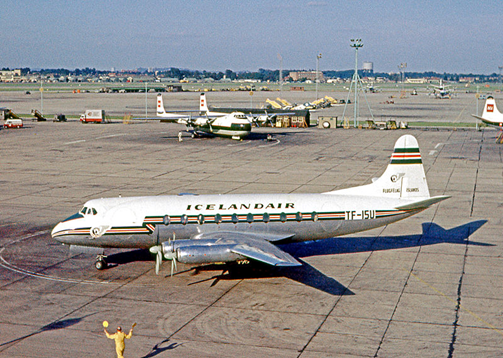
The 1970’s would see half the runways closed to allow other expansion within the airport’s boundary, this left just the two main east-west runways and a smaller one running roughly north east to south west for cross wind landings. This runway itself (Runway 23) would be closed in 2002 as in 1986 Terminal 4 would be built across its end making it unsuitable to all but the smallest of airliners and thus rarely used.
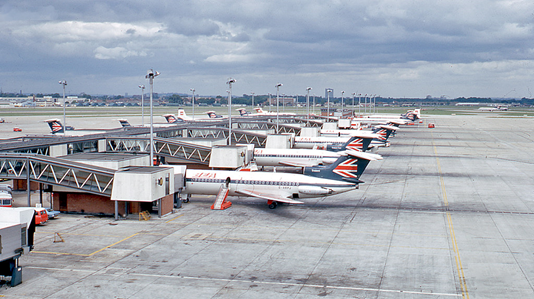
By the end of the 1970’s the Underground tube line had been extended into the central area making the airport just an hour’s train ride from central London. 1974 would also see BEA and BOAC merge along with Northeast and Cambrian to form British Airways. Their combined fleet would continue to dominate Heathrow right up to the present day.
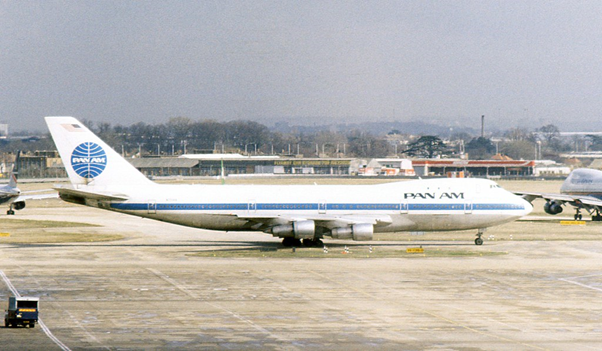
When Terminal 4 opened in 1986 it became solely used by British Airways long haul flights. The following year the British Airports Authority was privatised by the Government and the new concern spent several years freeing up terminal space and putting in more and more retail outlets.
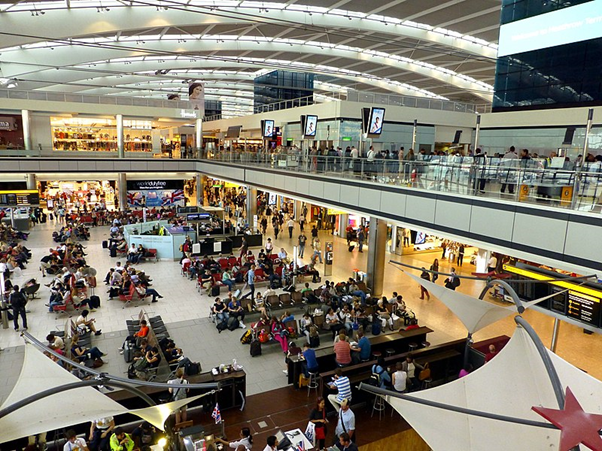
Concorde had been operating since 1976 with British Airways and twenty years later in February 1996 a Concorde would set the record for a New York to London crossing of two hours 52 minutes 59 seconds. By 1989 the planning application for Terminal 5 had begun, eight years later it finally got government approval, the longest planning application of all time. How the airport authorities must have wished for the opportunities Lord Balfour had back in 1944! It would however still be another five years before construction began.
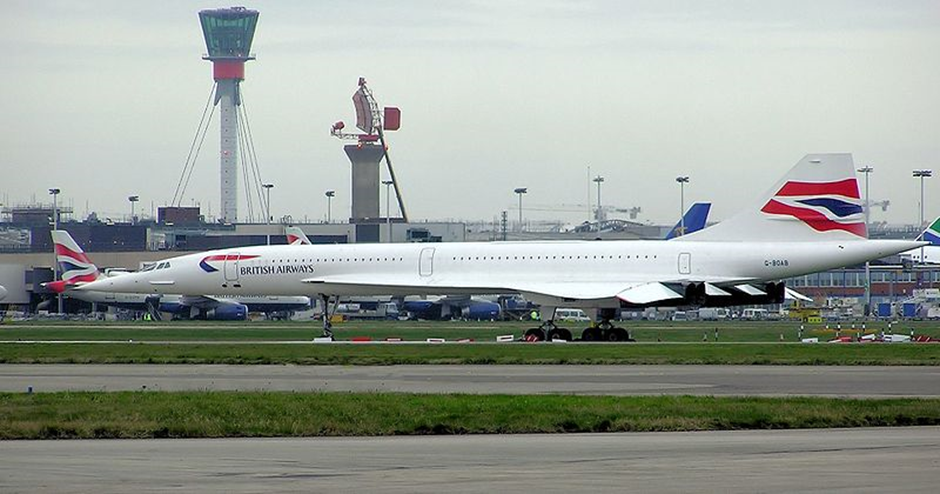
In preparation for the arrival of the world’s largest airliner the Airbus A380 a new arrivals pier had been constructed on Terminal 3 also many other alterations such as taxiway widening etc had been carried out at a cost of £340M to accommodate the new super jumbo. 2007 saw a new 87metre high control tower erected on the airfield begin operations, thus signing the death warrant of the old iconic Heathrow tower in the central area.
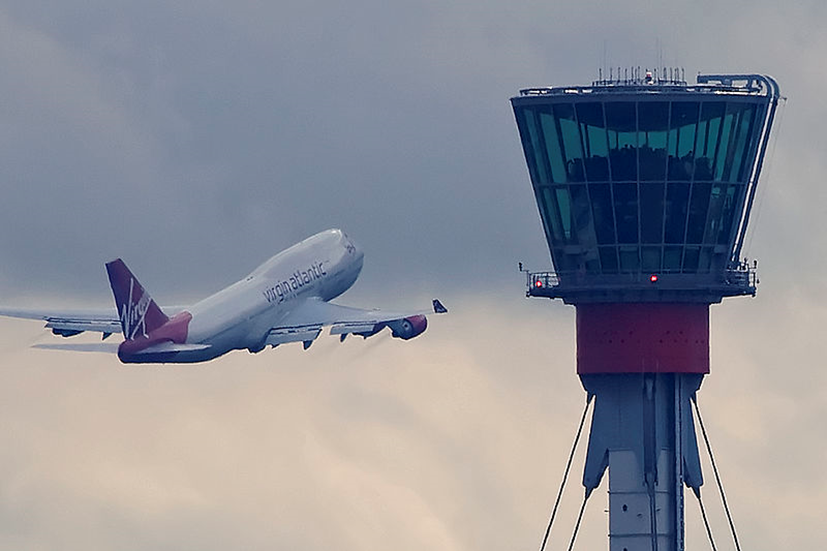
This same year saw the start of a consultation process regarding a new third runway and sixth terminal to be built on the north side of the airport just as the plan had been back in the 1950’s. The following year in 2008 saw Queen Elizabeth 2 opening the new state of the art Terminal 5 which was planned to be used exclusively by British Airways allowing it to bring its whole operation under one roof. This plan proved to be overly optimistic as even with two satellite buildings Terminal 5 was still not big enough for the entire British Airways operation at Heathrow. 2008 also saw the first arrival of the A380 when Singapore Airlines operated their inaugural service into Heathrow using the huge jet.
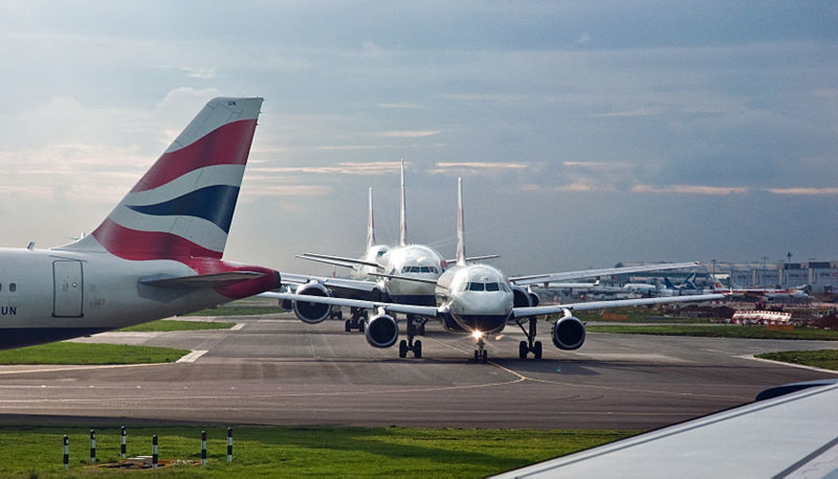
With Terminal 5 now opened work began on rebuilding Terminal 2 which saw the demolition of the Queens Building and eventual removal of the old Terminal 2. As the decade ended the government approved the building of the 3rd runway and sixth terminal. However one year later with a new government in power this approval was cancelled.
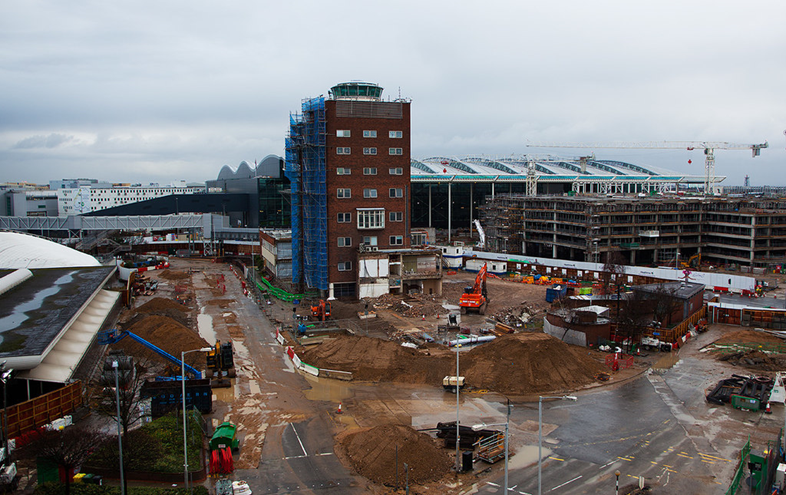
By 2013 with the need for an access road to the new Terminal 2 the original brick built control tower was demolished. Also as part of the new Terminal 2 second phase build, the original Terminal 1 was closed and pulled down in 2015. In 2016 a government report supported the third runway/sixth terminal at Heathrow. In 2019 the phase 2 expansion of Terminal 2 opened.
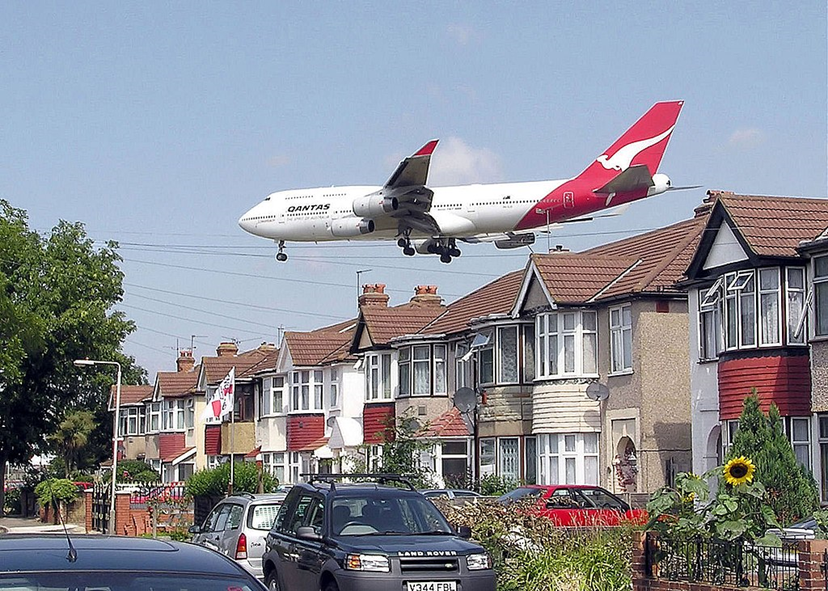
2020 saw Covid arrive and the shut down of the aviation industry. Now slowly coming back to life the airlines operations have a long way to go before they come anywhere near their old levels. Huge numbers of old and some not so old aircraft have been grounded, scrapped or stored. This was not always a bad thing as the older aircraft were the most noisy and polluting. Noise around Heathrow has always been an issue since councils and developers decided it was a good place to build houses! What effect this will have on airports like Heathrow remains to be seen but it must put the desire to build another runway and terminal into doubt until passenger levels recover.
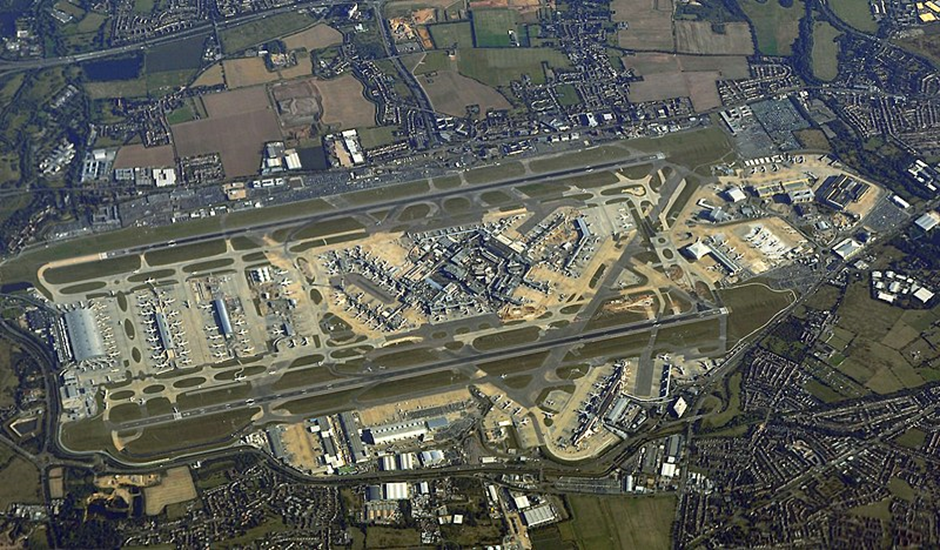
Born out of a need for a civil airport and a desire to mislead for expediency and to cut costs, Heathrow has served the travelling public well for the last 78 years. It is the busiest airport in Europe and the 7th busiest in the world. Constantly evolving it has often been described as a building site with an airport attached. Having spent all my working life there I can attest to the truth in that statement.
‘till the next time Keith
Registered Charity No. 285809